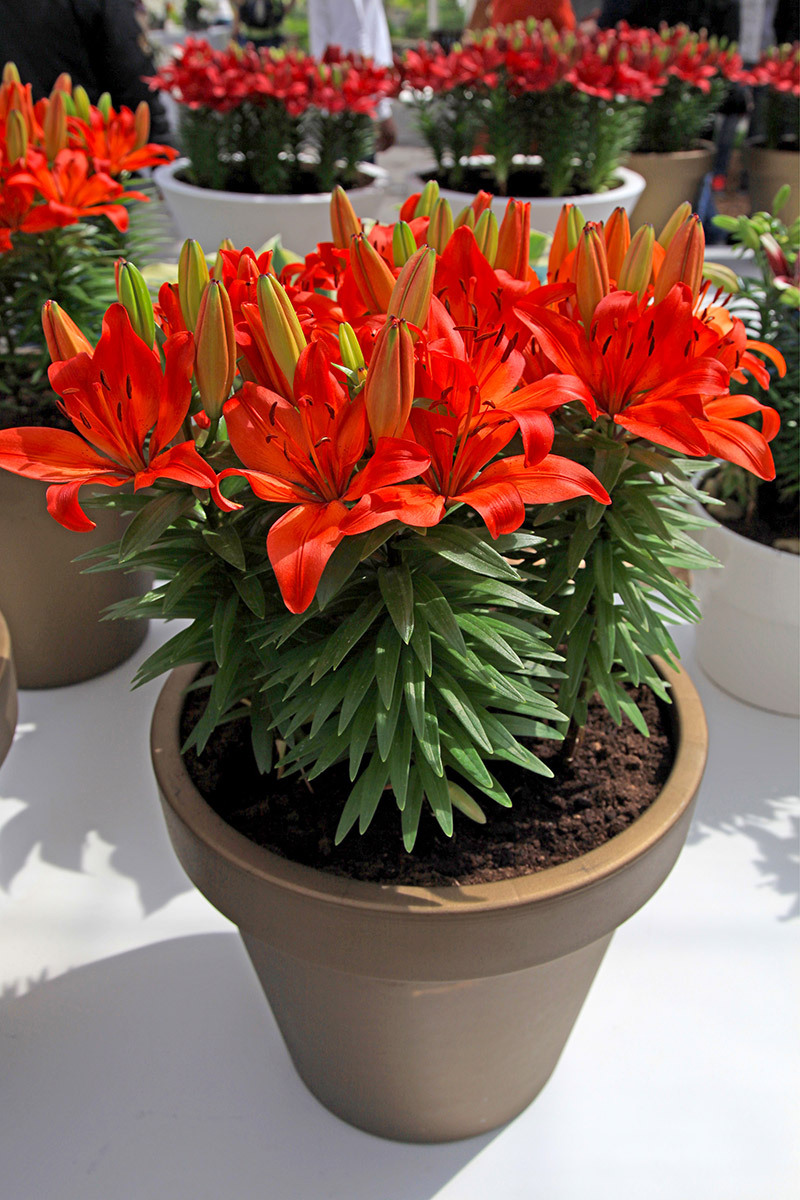Secrets to Thriving Hydrangeas: Ultimate Care Tips
Posted on 14/08/2025
Secrets to Thriving Hydrangeas: Ultimate Care Tips
Hydrangeas, with their breathtaking blooms and lush foliage, have enchanted gardeners for centuries. If you've ever wondered why your hydrangeas aren't as vigorous or vibrant as those in magazines, you're not alone. Unlocking the secrets to thriving hydrangeas requires understanding their unique needs and giving them just the right care. In this comprehensive guide, we reveal ultimate hydrangea care tips--from planting to pruning and troubleshooting, ensuring your hydrangeas blossom into healthy, show-stopping displays.
Understanding Hydrangeas: Varieties & Essential Facts
Before delving into care instructions, it's vital to understand the hydrangea family. The genus Hydrangea comprises several species, each with specific requirements and bloom characteristics:
- Hydrangea macrophylla: Also known as bigleaf hydrangea, famous for its mophead and lacecap flowers. Color varies with soil pH.
- Hydrangea paniculata: Known as panicle hydrangeas, with elongated, cone-shaped blooms. Incredibly cold-hardy.
- Hydrangea quercifolia: Commonly called oakleaf hydrangea, distinguished by foliage resembling oak leaves and white panicles that age to pink.
- Hydrangea arborescens: Often called smooth hydrangea or 'Annabelle', produces large, round flower clusters.
- Hydrangea serrata: Similar to bigleaf hydrangea but more compact and cold-tolerant.
- Climbing hydrangea (Hydrangea petiolaris): Valued for its vining habit and lace-like white blossoms.
Knowing your variety helps tremendously when tailoring care for spectacular hydrangea blooms.

Planting for Success: Site, Soil, and Spacing
Choosing the Perfect Location
Site selection is the first secret behind lush hydrangea health. All hydrangeas prefer locations with:
- Morning sun and afternoon shade: Light requirements may vary by species. Bigleaf, oakleaf, and serrata hydrangeas do best with dappled light, while panicle hydrangeas tolerate more sun.
- Protection from harsh winds: Plant near fences or buildings, which can shield from drying gusts, especially important for large-leaved types.
- Well-draining soil: Hydrangeas cannot abide soggy ground. Improve drainage by amending heavy clay with compost and sand.
Soil Preparation & Amendments
Hydrangeas thrive in slightly acidic to neutral soil (pH 5.5-7). To achieve optimal hydrangea growth:
- Test your soil before planting and adjust pH as needed.
- Amend with organic matter such as leaf mold, compost, or well-rotted manure for richer, moisture-retentive soil.
- Add slow-release fertilizer or bone meal at planting time to promote robust root development.
Planting Hydrangeas Step by Step
- Dig a hole twice as wide and just as deep as the root ball.
- Gently loosen roots, ensuring they are not circling the pot.
- Set the plant at the same depth it was growing in its container.
- Backfill with amended soil.
- Water thoroughly and mulch well around the base for moisture preservation and weed control.
- Space hydrangeas generously (usually at least 3 feet apart) to allow air circulation--critical for disease prevention.
Watering Secrets: Keeping Hydrangeas Hydrated
Consistent moisture is a hallmark of vital hydrangea care. These plants have lavish leaves that lose water rapidly, especially in dry spells. Here's how to keep your hydrangea flowers thriving:
- Water deeply and regularly, especially during the first two years as roots establish.
- Check soil moisture by feeling 2 inches below the surface. If it feels dry, time to water.
- Early morning watering reduces fungal disease risk.
- Use soaker hoses or drip irrigation to target roots and keep foliage dry.
- Mulch with 2-3 inches of bark or pine straw to retain soil humidity and moderate temperature.
- Avoid overhead watering--wet leaves are more prone to fungal diseases like powdery mildew.
Feeding & Fertilizing: Nutrition for Lush Blooms
Best Fertilizers for Hydrangeas
Strong growth and showstopping hydrangea blooms need proper nutrition. Choose a balanced, slow-release fertilizer (such as 10-10-10 or 14-14-14). However, take care not to overfeed, which can result in leafy plants with few flowers. For an organic approach, compost or fish emulsion work well.
When and How to Fertilize Hydrangeas
- First feeding: Apply in early spring as new growth emerges.
- Second feeding: Feed again in midsummer for extended blooming, especially for reblooming varieties.
- How: Spread fertilizer evenly under the dripline--avoid piling against stems. Water in thoroughly.
Caution: Over-fertilizing can lead to lush foliage at the expense of flowers. Always follow label instructions and err on the side of less.
Pruning Mastery: Timing & Technique
Which Hydrangeas to Prune, and When
Pruning hydrangeas optimizes growth, controls shape, and maximizes flowering. But different hydrangea species bloom on either old or new wood:
- Old wood bloomers: Bigleaf, oakleaf, and climbing hydrangeas set flower buds in late summer or fall for the next year. Prune them immediately after flowering!
- New wood bloomers: Panicle and smooth hydrangeas flower on the current season's growth. Prune in late winter or early spring before new growth starts.
How to Prune Hydrangeas for Maximum Blooms
- Use sharp, clean pruners.
- Remove dead, damaged, or crossing stems first.
- Thin crowded growth from the base to improve air flow.
- Cut spent flower heads just above a pair of healthy buds.
- For older plants, remove up to one-third of the oldest stems at ground level to reinvigorate.
Tip: Don't worry if you make a mistake; hydrangeas are forgiving. Over time, you'll master the subtle art of pruning for optimal hydrangea health and blooms.
Changing Hydrangea Flower Color: The Science of Soil pH
One of the most fascinating hydrangea care secrets is that you can sometimes change the color of your bigleaf hydrangea flowers:
- Acidic soil (pH below 6.0): Produces blue flowers.
- Alkaline soil (pH above 7.0): Results in pink flowers.
To nudge your blooms blue, apply aluminum sulfate or mulch with pine needles. For pinker flowers, add garden lime. Change is gradual--it might take a full season to see significant transformation.
Note: Panicle, oakleaf, and smooth hydrangeas are not affected by soil pH.
Mulching & Weed Control: Lock in Moisture
Mulching hydrangeas is more than just a cosmetic step--it's the key to thriving hydrangea plants. Use 2-3 inches of organic mulch (bark, pine needles, or leaf mold) to:
- Suppress weeds that steal nutrients and water.
- Maintain steady soil moisture, reducing drought stress.
- Protect roots from temperature extremes.
- Feed the soil as the mulch breaks down over time.
Replenish mulch yearly, keeping it a few inches away from stems to prevent rot.
Hydrangea Care Throughout the Seasons
Spring
- Feed hydrangeas as new growth emerges.
- Prune new-wood bloomers (smooth, panicle) before shoots appear.
- Clear old mulch and top with new.
- Water if rainfall is sparse.
Summer
- Maintain consistent moisture; hot spells may require daily watering.
- Deadhead spent blooms to encourage continued flowering.
- Watch for pests and treat accordingly.
Fall
- Let flowers age for winter interest, if desired.
- Prune old-wood bloomers immediately after flowering.
- Cease feeding to avoid new, tender growth before frost.
- Deep water before the first hard freeze (especially important for newly planted hydrangeas).
Winter
- Mulch roots deeply in cold climates.
- Wrap young plants with burlap in exposed areas to prevent windburn.
- Avoid pruning old-wood types--buds are forming for next year!
Troubleshooting Common Hydrangea Problems
Why Won't My Hydrangea Bloom?
Possible causes include:
- Improper pruning: Pruning old-wood bloomers too late removes next year's buds.
- Over-fertilizing: Excess nitrogen creates abundant foliage but few flowers.
- Winter injury: Cold snaps can kill forming buds--protect plants in harsh zones.
- Insufficient sunlight: Too much shade hinders bud development, especially for panicles.
Leaf Problems: Wilting, Yellowing, or Spots?
- Wilting: Most often due to underwatering or root rot from waterlogged soil.
- Yellowing leaves: Can signal poor drainage, root stress, or chlorosis from high soil pH.
- Spots or powdery residue: May indicate fungal diseases; improve air flow and avoid overhead irrigation.
Pests That Affect Hydrangea Health
- Aphids: Small, sap-sucking insects. Spray with hose or insecticidal soap.
- Spider mites: Tiny, dusty webs or stippled leaves indicate their presence. Increase humidity and spray with water.
- Slugs/snails: Chew holes in leaves; hand-pick or use iron phosphate baits.
Maintaining healthy soil and good air flow is the best pest prevention.
Bonus Tips for Exceptional Hydrangea Displays
- Staking: Some large-flowered varieties may flop after rain. Use discreet stakes for support.
- Companion planting: Hydrangeas pair beautifully with hostas, ferns, astilbe, and Japanese forest grass--richer, more diverse borders also help shade roots.
- Container hydrangeas: Choose compact varieties and use large, well-drained pots. Keep up with watering--potted plants dry faster!

Frequently Asked Questions about Hydrangea Care
Can I Grow Hydrangeas Indoors?
While most hydrangeas thrive best outdoors, you can temporarily enjoy them as a gift plant indoors. Place in bright, indirect light and keep the soil moist. Replant outside after blooming for long-term success.
How Do I Revive a Drooping Hydrangea?
Hydrangeas wilt when thirsty. Water thoroughly at the base and provide shade in the hottest weather. For drooping cut blooms, recut stems underwater and soak in cool water for an hour to revive.
How Long Do Hydrangeas Live?
Many hydrangeas can live for decades with proper care--continually providing beauty and color year after year.
Conclusion: Unveil the Secrets to Thriving Hydrangeas in Your Garden
If you've ever yearned for spectacular hydrangea displays, remember: success lies in understanding your plant's needs. By selecting the right location, preparing great soil, watering wisely, feeding moderately, and pruning with confidence, your hydrangeas will reward you with a stunning spectacle of blooms. Monitor for pests and problems, mulch for moisture, and don't hesitate to experiment with color-changing techniques.
Your own garden's showstopping hydrangeas are within reach--start applying these ultimate hydrangea care tips today and reveal the secrets for lush, thriving hydrangea flowers every season!
Latest Posts
Extend the Lifespan of Your Poinsettias
Essential Tips for Thriving Orchids
The Symbolic Tale of Red Roses on Valentine's Day
Secrets to Thriving Hydrangeas: Ultimate Care Tips
Discover the Top 12 Long-Lasting Flowers to Brighten Your Space






